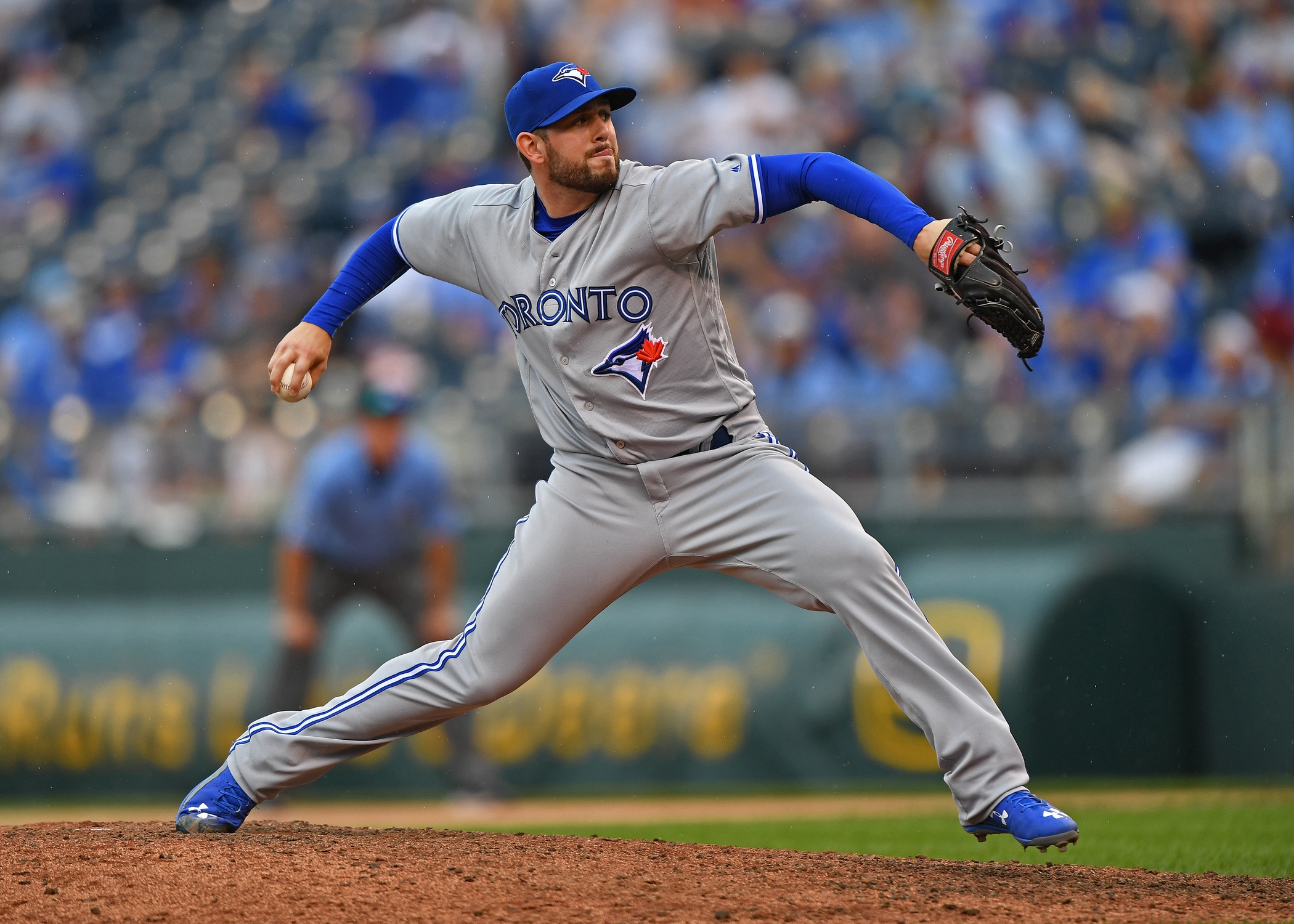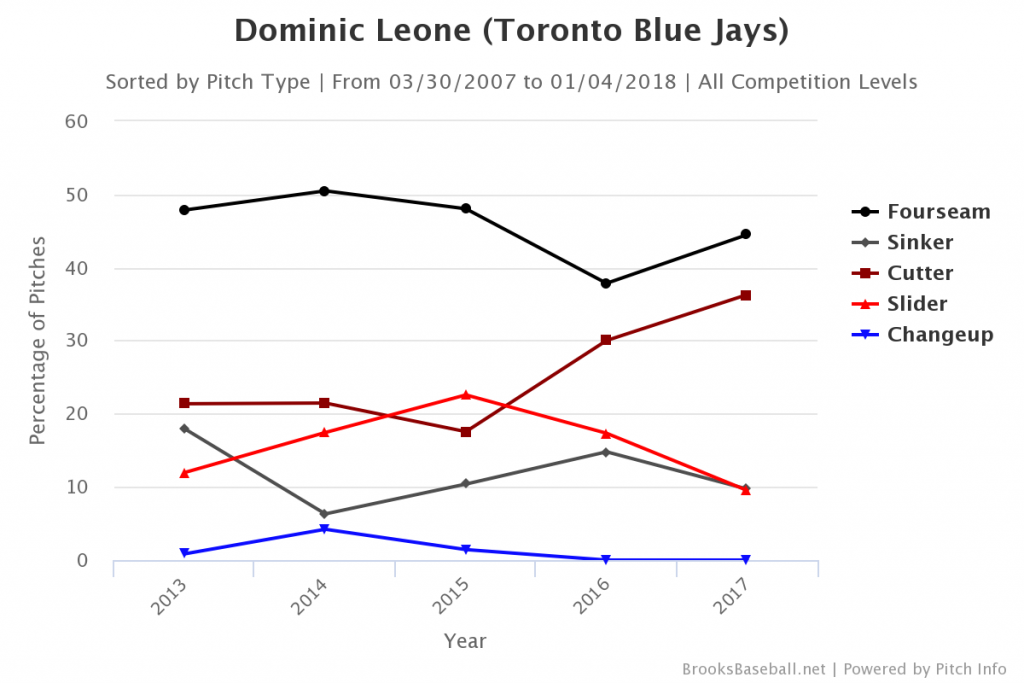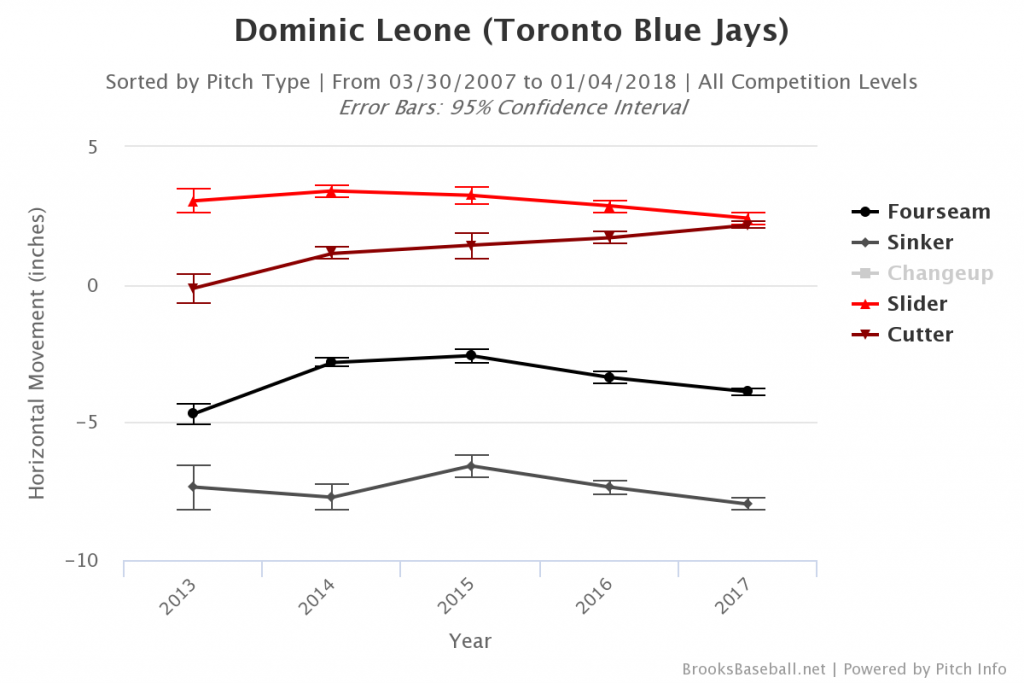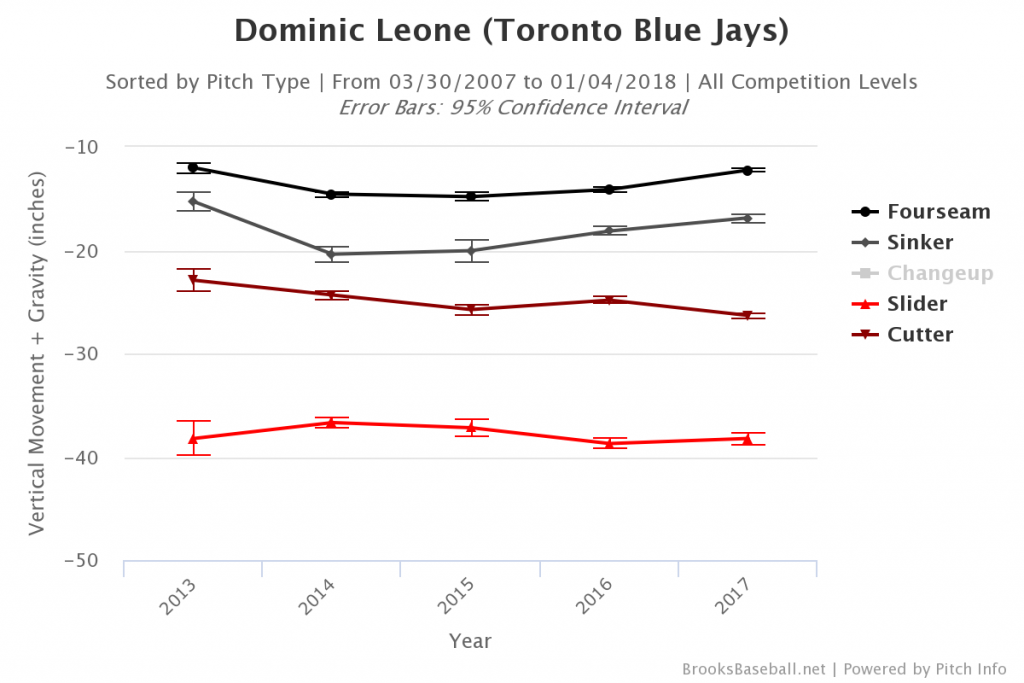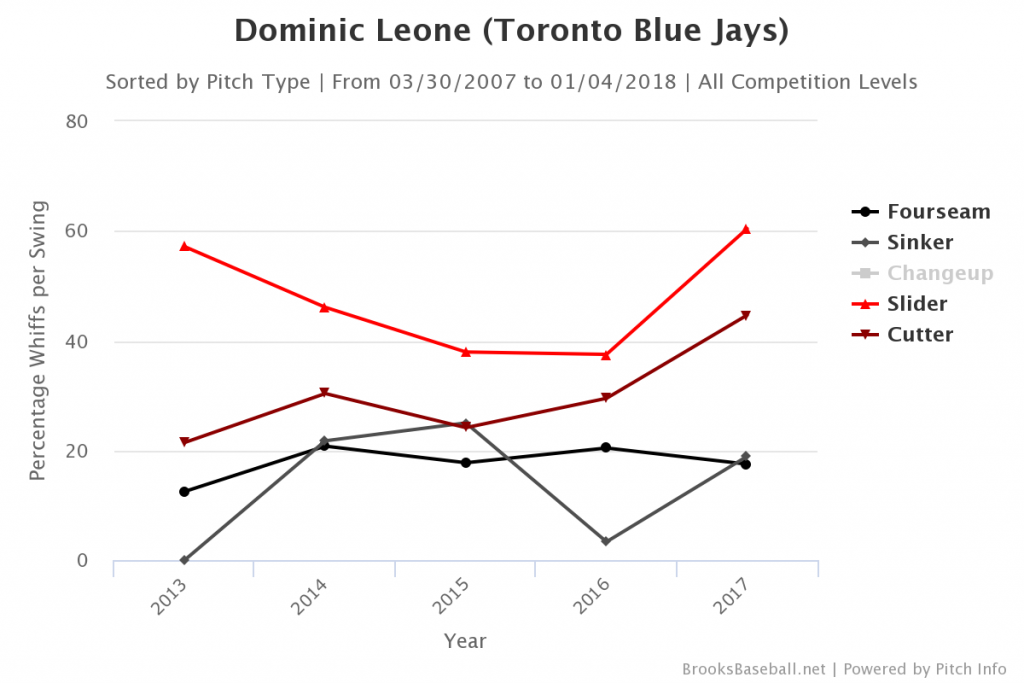When the Blue Jays plucked Dominic Leone off waivers from the Arizona Diamondbacks last offseason, the move went by with hardly a whisper. Despite having had some success with the Mariners back in 2014, Leone was seen only as a depth reliever, with some hope that he could improve enough to help a big league bullpen as the seventh or eighth arm in the pecking order.
Obviously, things worked out a little bit better than that for the Jays. After a few unfortunate options back to Buffalo (because, other than fellow breakout pitcher Ryan Tepera, he was the only pitcher with options remaining), Leone became a trusted seventh-inning bridge to Tepera and Roberto Osuna at the end of games.
By the end of the season Leone had thrown the most innings in his career (70 1/3) and put up career-bests in strikeout rate (29.0 percent), walk rate (8.2 percent), whiff rate (32.5 percent), and DRA- (59.9), along with the second-lowest ERA of his career (2.56), en route to a 1.8-WARP season. In short, he was an excellent big league reliever and provided unreal value compared to his acquisition cost.
But that was 2017. The question that should be on everybody’s mind (apart from why the offseason has unfolded at such a snail’s pace) is if Leone is likely to repeat that success, or if this great year was just the random reliever variance that we see throughout baseball.
In order for the answer to fall closer to the “sustainable” end of the spectrum, there needs to have been some identifiable change in stuff or approach. Thankfully, Leone’s season was successful due to both.
First, his approach:
Over the last couple of years, Leone has really started to lean on the cutter, having junked the changeup completely. But what sets last year apart from 2016 is that Leone dropped the usage of both the sinker and slider in favour of more fourseamers and cutters. Clearly, he was attacking hitters differently.
Of course, while changing pitch usage is certainly useful, that alone doesn’t usually account for such a change in performance – especially when Leone’s cutter and slider were both already very good offerings. There has to be something else: a cause for the switch not only to have been successful, but to have occured at all.
In this case, the stuff itself changed completely. According to Texas Leaguers, Leone’s fourseam fastball had a spin rate of 1892 rpm in 2016, with the cutter spinning at 871 rpm. Both of those numbers are well below-average. Then in 2017, Leone suddenly came armed with an entirely new set of heaters. The fourseamer started coming in with a spin rate 368 rpm higher than the year before (2260 vs 1892), with an even more substantial gain for the cutter at +788 (1659 vs 871). Even the slider saw tremendous gains, going from 711 rpm in 2017 to 1248 in 2017. All of these changes occurred with negligible changes in spin axis, so it wasn’t a grip or release angle change. He was simply getting more spin on everything.
Now, a higher spin rate alone doesn’t tell the whole story. High and low spin matter differently depending on one’s profile. For a fourseam-heavy guy like Marco Estrada, a high spin rate helps him get unusual “rise” on his fastball. For a sinkerballer like Marcus Stroman, less spin helps his fastball fall more and generate more groundballs. So it’s important to look at how the spin is actually affecting the movement of the pitch.
As you can see, in 2017 Leone’s cutter was almost identical to his slider in terms of horizontal movement, with the biggest difference in break from the fastball in his career (6.1” on the cutter ). That’s going to come into play later, but first we need to look at the change in Leone’s stuff that occurs on the vertical axis.
Thanks to the increased spin rate on the fourseamer, Leone was getting the most vertical separation of his career between the fourseamer and the cutter last year (14.1”, up from 10.7” in 2016). That’s an enormous gap to cover considering the difference in velocity is only 6 mph on average (94.9 vs 88.95). On top of that, the slider also has another 12” vertical break from the cutter, with a velocity difference of only 5 mph (88.95 vs 83.75).
When you add multiple inches of break between already tough-to-hit offerings, that makes a big difference. When combined with Leone’s new pitch usage, you end up seeing swing-and-miss rates on the breaking balls like the ones below:
Thanks to the heavy use fastballs and cutters, hitters have to prepare for high velocity. As a result, hitters have less time to adjust to the cutter. With shorter decision time and the extra break, both horizontally and vertically, it naturally leads to more whiffs. There is also an added bonus: That high velocity also makes the slider tougher to hit when Leone decides to throw it. Hitters are still forced to react earlier because of the frequency of the various fastballs, so even if they see happen to see movement and know it’s not the fourseamer, the identical horizontal break makes it tough to initially distinguish between cutter and slider. With another 12” of vertical break to deal with between the two pitches, you get a lot of early, over-the-ball swings on the slider, which is why Leone’s slider had a top-five swing-and-miss rate in all of baseball last season.
All of this is why I believe in Dominic Leone going forward. Yes, he’s a reliever, so things could just go wrong without warning – but beyond that required caveat for all bullpen-dwellers, everything he did in 2017 suggests that he should be good again in 2018. His stuff changed, then he adjusted how he used it to maximize his success (likely with the help of Russell Martin and Pete Walker).
When the Jays acquired him last winter, Dominic Leone was a good value pickup. Thanks to these changes, now he’s just valuable.
Lead Photo © Peter G. Aiken-USA TODAY Sports
